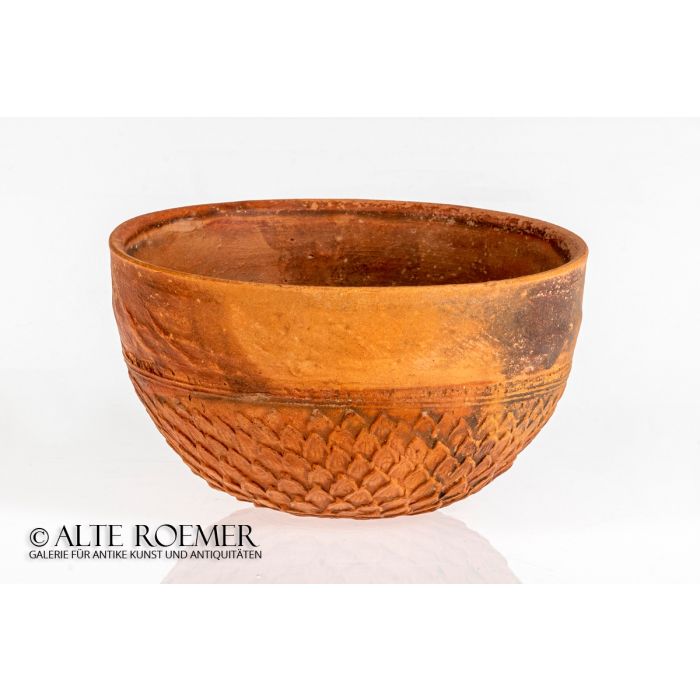Megarian bowl with floral decoration
Price: on request
Sold
Object number
AR2854
| Object: |
Deep hemispherical bowl So-called Megarian Bowl. |
| Material: |
Red clay with well preserved dark-red slip
|
| Date: |
Late 2nd - 1st century BC Hellenistic period |
| Description: |
Hemispherical bowl. The body is decorated with six overlapping bands of petals, and a blossom with petals in the tondo on the base.
|
| Historical note: |
The so-called Megarian Bowls are relief-decorated bowls which originate from the Hellenistic period, where they became much more popular than the painted pottery of earlier times. The name "Megarian" was given to this type of pottery in the late nineteenth century, after the discovery of a large amount of such bowls at the ancient city of Megara. Although it has since been demonstrated that bowls of this type originated in Athens in the third quarter of the third century BC, the attribution as "Megarian" bowls remained popular and unchanged. These bowls were popular in the entire Mediterranean area and were produced at a number of different centers in the second and first century BC for local use and export.
|
| Size: |
Height 71 mm, diameter 122 mm
|
| Condition: |
Almost perfectly preserved, including most of the original dark-red slip. Sharp and well preserved decoration.
|
| Literature: |
Tanju Anlagan, Sadberk Hanim Museum. Moldmade bowls and related wares (Istanbul 2000)
|
| Provenance: |
Acquired 2019 from the German private collection G. E. Acquired by G. E. from the German private collection Dr. H. R. Acquired by Dr. R. December 04, 1976, at Antikenhandlung Karl Heinz Zühlsdorf, Cologne, Germany. Said to have been found in Turkey.
|
| Collection Dr. H. R.: |
Dr. H. R., who graduated in Classical Philology, was a grammar school (Gymnasium) teacher and a scholar of ancient history. After finishing his studies, he began collecting Roman coins in 1970. Only one year later, Dr. R. started to add other antiquities from the Roman Imperial era to his collection, soon followed by Greek vases which mainly originated from South Italy. The collection was exhibited at his residence in the Rhineland in Germany. The last object of the collection was acquired in 1989.
|
| Authenticity: |
We unconditionally guarantee the authenticity of every artefact, all items are subject to our lifetime return policy on authenticity.
|


